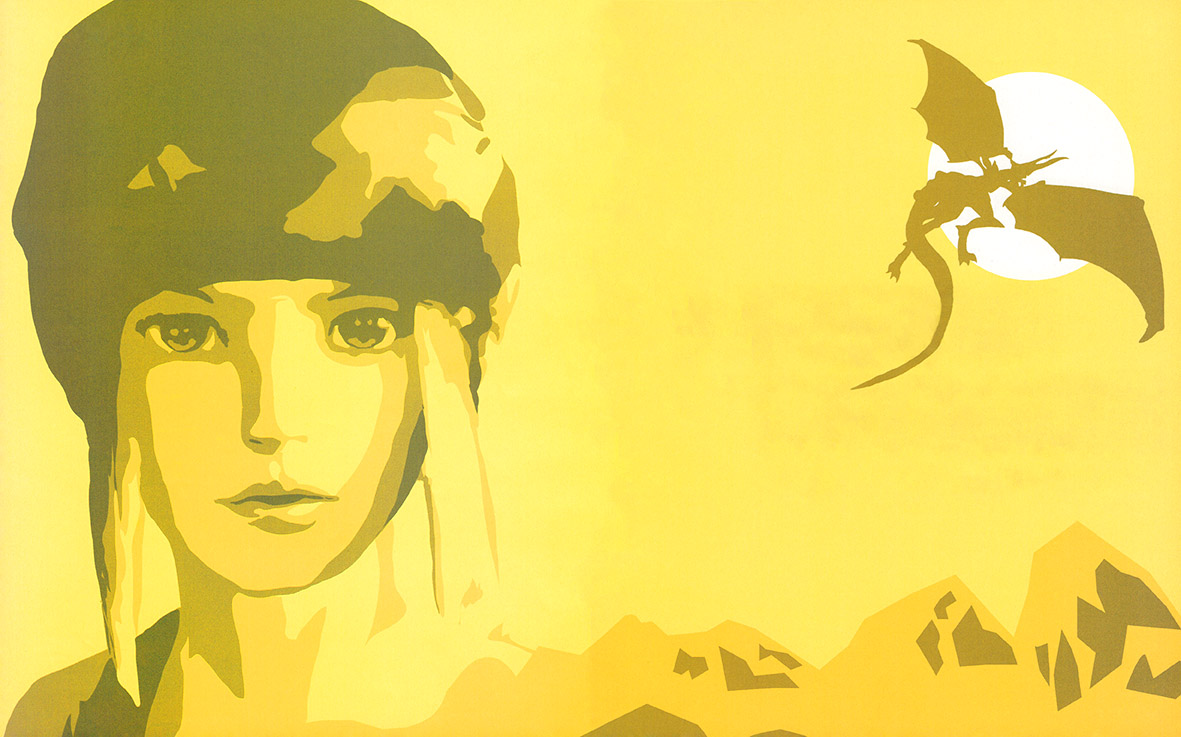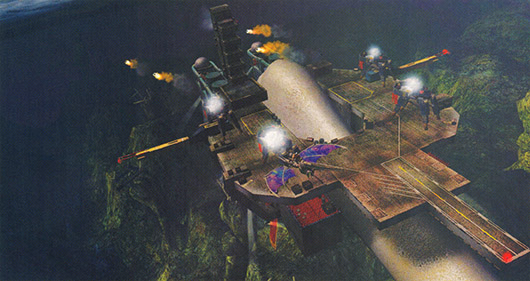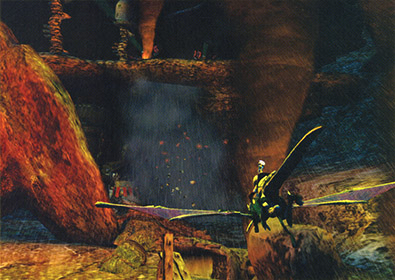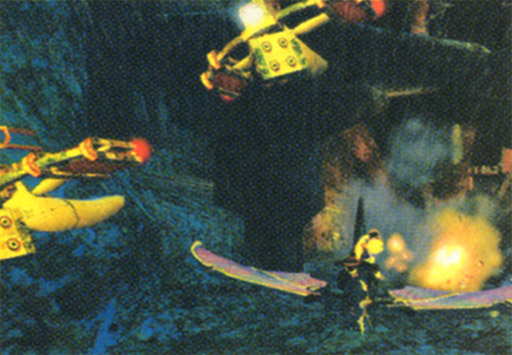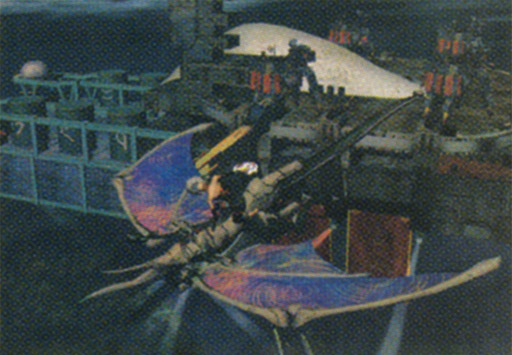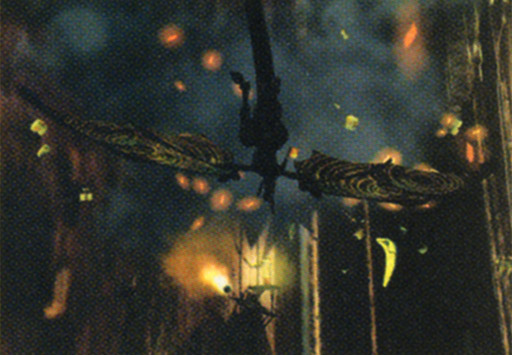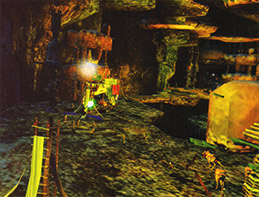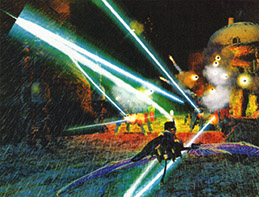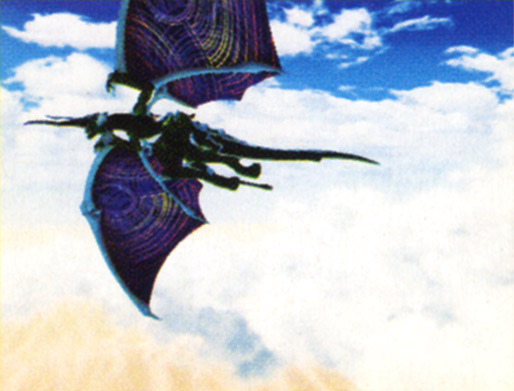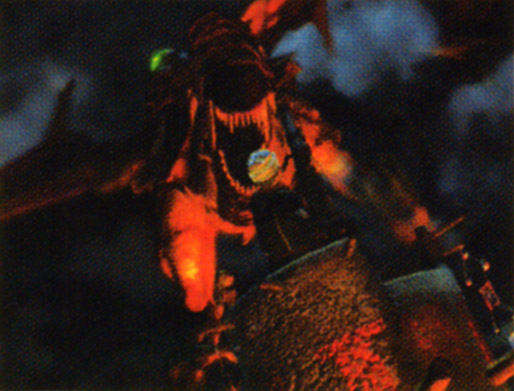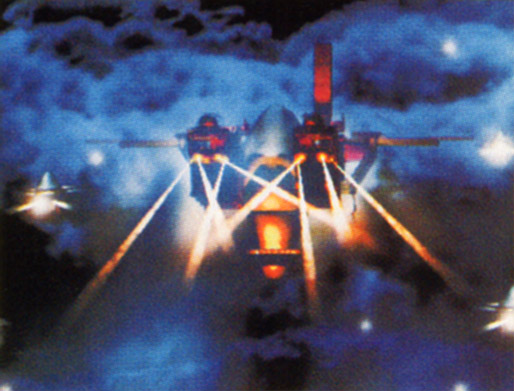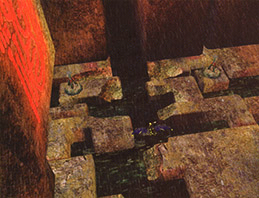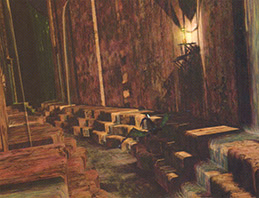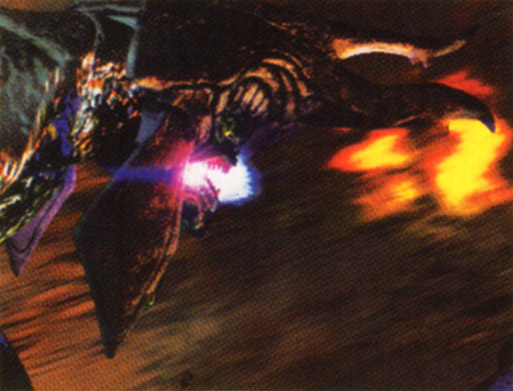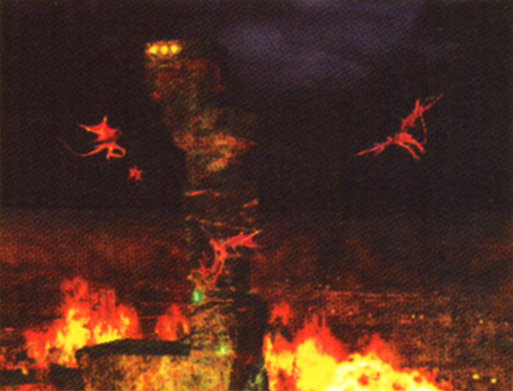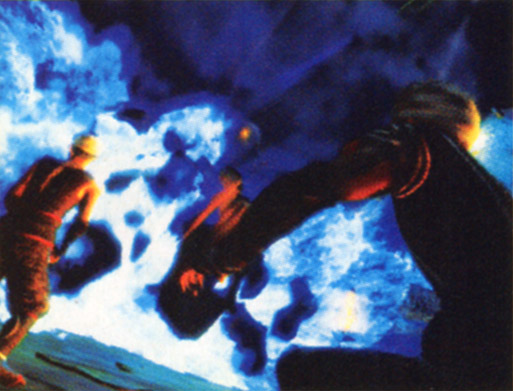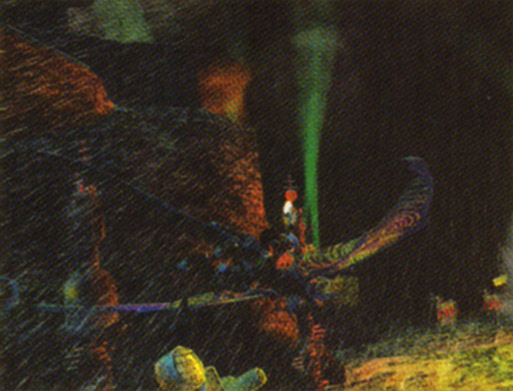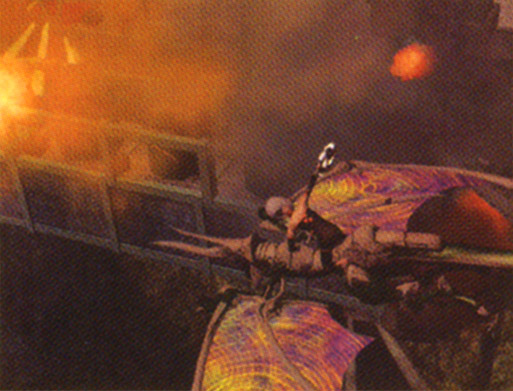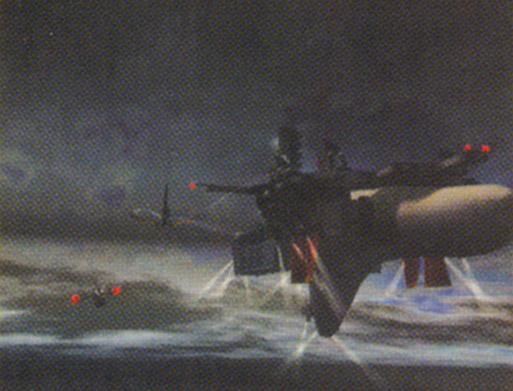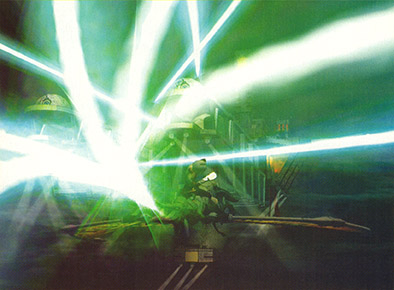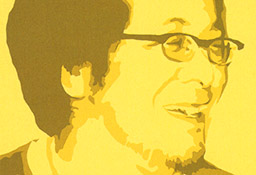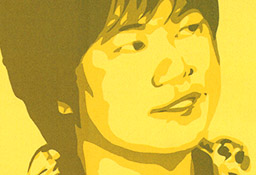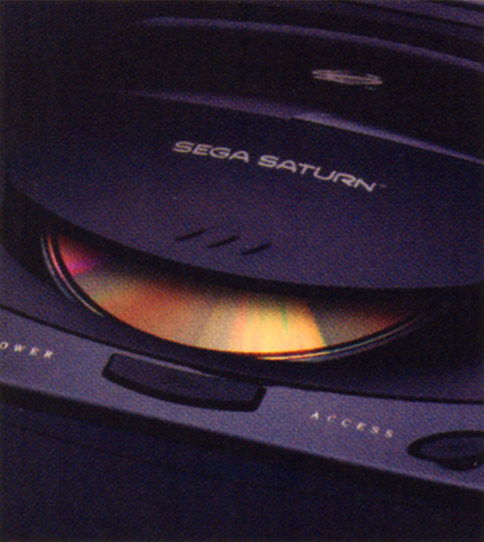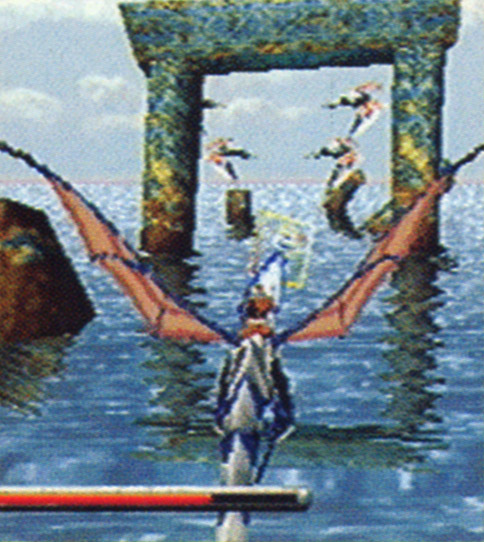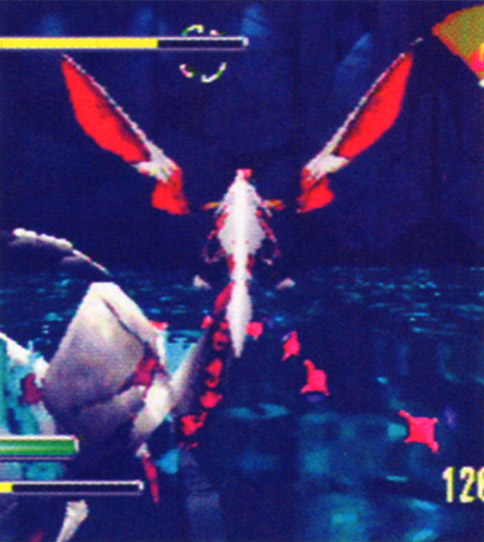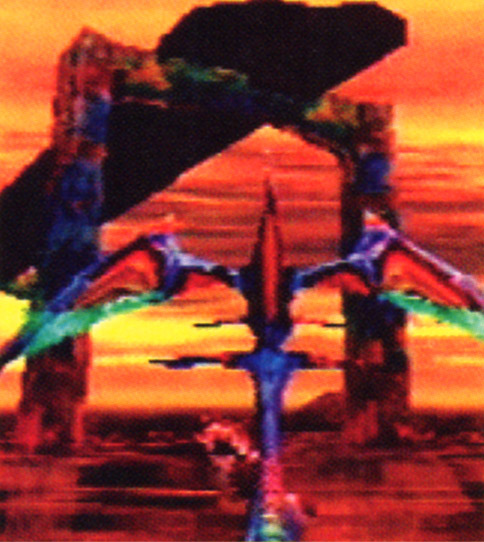
Feature
Chasing the Dragon
After years of speculation as to the future of one of Sega’s most beloved franchises, XBN is granted a world-exclusive preview and playtest of Panzer Dragoon Orta.
The Tokyo Game Show, March 2001. Microsoft and Sega executives take the stage to announce 11 Sega games are in development for Xbox. One causes waves of excitement to ripple through the crowd. “Panzer Dragoon coming to Xbox!” screams every gaming Web site 30 minutes later—inaugurating a year of speculation, debate, and fanboy fisticuffs over which system is the most worthy recipient for the return of the esteemed series. Dreamcast stalwarts are devastated, PlayStation 2 converts are mystified, and prospective Xbox owners are very happy indeed. Meanwhile, some people are still asking, “What’s a dragoon?”
Six months later at the September TGS, anticipation is peaking around the possibility of the first Panzer footage being unveiled, amid debate about Jet Set Radio Future developer Smilebit’s potential for pulling it all off. A teaser trailer kicks in depicting what looks like an animated fossil followed—get this—by a logo for the game. For most in attendance a collective, “Is that it?’’ suffices, before everyone wanders off in a post-Episode 1 sulk.
(Above) The graphical detail in Panzer Dragoon Orta is of an order of magnitude greater than anything you’re likely to see on Xbox this year. The sense of scale created by these enormous airships is equally impressive.
To grasp such fervent expectations, consider that Panzer Dragoon is a textbook example of a cult game series: The Panzer games weren’t released in big numbers from the start, which obviously helps. But the trilogy climaxes in what some regard as the greatest console RPG ever created—Panzer Dragoon Saga—0ne of the most rare and most highly sought after games ever. Stylistically, the Panzer games were pure. undiluted genius and featured a surreal, visionary world like no other wherein a young boy’s struggles against an evil empire played out in the most engrossing way possible. And like a rock star whose afterlife status is assured the moment his plane hits a mountain, its legacy lives on-well beyond the demise of its host machine, the ill-fated Sega Saturn. Talk about a weight of expectation…
“We didn’t have any plans for a new Panzer Dragoon game. certainly not on Dreamcast.” explains Smilebit’s head honcho, Takayuki Kawagoe, when quizzed about the interminable wait fans have had to endure. “We did have a lot of pressure from fans to release another Panzer for the Dreamcast, but we felt that the series in its current incarnation as a trilogy had reached a logical conclusion. However, we had done a lot of research into Xbox for our initial titles [Jet Set Radio Future and GunValkyrie] and we were interested in the potential to take the series to a new place with the Xbox hardware.”
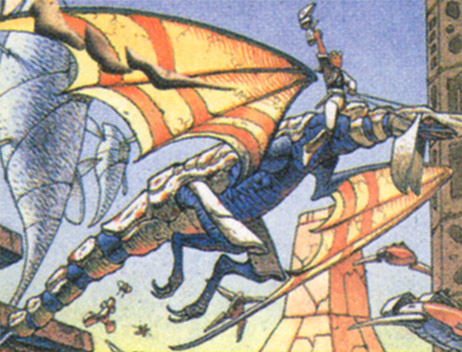
Xbox Nation is interested too. So much so it was recently granted the opportunity to sample a world-exclusive first playtest of Panzer Dragoon Orta (Orta being the name of the heroine) in Tokyo. Don’t get too excited-the version sampled was just 20 percent complete, and the final game won’t surface until early next year. However, already there are a stack of reasons to relax and have faith that the series is in good hands and, more importantly, plenty of reasons why it’ll be a premier Xbox title next year.
As expected, Smilebit has chosen to stay closer to the series’ beginnings with Orta and have modelled the game more closely on the original Panzer Dragoon and its sensational sequel Panzer Dragoon II Zwei, than on the RPG finale Panzer Dragoon Saga. Most crucially. the game 1s still on rails, and yes, it’s essentially still a shooter with auto-lock-on weapons. But Just as the original game’s premise was built upon immersing the player in beautifully surreal worlds, the Xbox version takes this formula and runs riot.
“If you had to categorize it, you could say it’s a shooter,” says director/project leader and former planner for Saga Akihiko Mukaiyama. “It’s a similar game system to Panzer Dragoon Zwei—that is, on-rails shooting with some collection and dragon evolution along the way. We pre-decided the nature of the game to be on-rails. that way we could script the surroundings and make the journey a lot more beautiful. The enemy combat system also only works if the game is on rails, as their appearance is scripted.”
In the level XBN played the basic game system was in place, although finished graphics were not yet implemented. Despite this, both the scope and detail of the graphics were already extremely impressive, with plenty of life visible as our beautiful dragon swooped through stormy mountain chasms, under rock bridges and past mountain-dwelling civilizations. At one point a mountain chasm opened up into a large valley arena, and we battled multiple faces of a giant futuristic spaceship. If you thought the bosses were impressive in Zwei (and they still are), you’re in for a massive treat.
Control of the dragon is elegantly handled we’re happy to report—the dragon is weightier than in Zwei, although still responsive. And while there was an overall feeling of familiarity here, many features such as a means to accelerate and decelerate were yet to be included. Firing and targeting were up and running using the basic weapon system from Zwei—one button is used to machine gun enemies with a stream of plasma bullets. as well as to lock on and, when held down, target multiple opponents. Upon targeting multiple enemies, the dragon can let loose a huge maelstrom of blue-laser streams which looks (and sounds) extremely impressive. And, as before, the shoulder buttons rotate your perspective to the sides and back, allowing you to target enemies approaching from any direction.
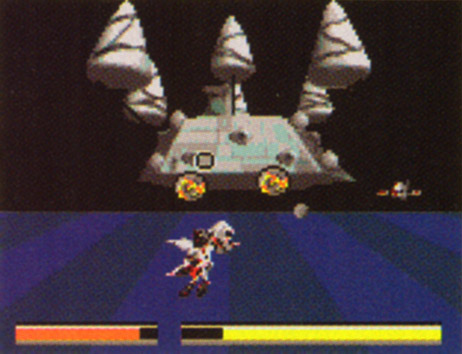
Although nothing revolutionary in itself, this early version is at least a hint of a game more expansive, more beautiful, and more refined than the games that inspired it. “There are two main differences players can look forward to [beyond Zwei],” says Mukaiyama. “One is the dragon transformation element—the dragon itself can transform depending on the situation. It’s a bit early to go into specifics, but for example, you might be able to transform shape depending on the type of level, or speed up if the stage requires it—different skills, weapons…that kind of thing. The other main difference is the level of freedom that’s available when flying the dragon has been expanded dramatically. It’s still on rails. but now there’s much greater scope.” The game will also feature branching paths, giving the game extended replay value.
This time around the game is set further in the future, meaning all the elements, such as the characters and settings, will be futuristic and appropriately developed from the original. “Basically, the last Panzer Dragoon games were set against the decline of a civilization,” Mukaiyama explains. “ It was an empty, deserted, lonely world. Panzer Dragoon Orta is set at the start of the next civilization so it’s a world with more life. It’s a beginning, not an end.”
There is encouraging news about the in-game music too—definitely one of the areas in which the originals truly excelled, particularly in putting the Saturn’s incredible sound chip through its paces. The new music is in the hands of Tomonori Sawada from inhouse Sega music division Wavemaster and renowned artist Saori Kobayashi—both composers of the incredible music in Panzer Dragoon Saga (in fact, Kobayashi composed the memorable end theme). While most of the work has yet to be done we did hear a beautiful score that was epic and suitably ethereal, including Japanese female vocals straight out of a fantasy anime.
Another World
Inevitably the biggest challenges Smilebit faces with Panzer Dragoon Orta are the most obvious. Taking a game system that’s essentially based on a 15-plus-year-old template—the arcade game Space Harrier—and imbuing it with enough depth and sophistication to satisfy today’s demanding gamers will be a major challenge in itself. However, anyone who’s played Zwei will surely testify that scripted enemies or not, it’s the control the player has over the camera direction in Panzer that gives a well-worn formula an intoxicating injection of strategy (and which Saga further exploited superbly).
Also, attention will be highly focused on how well the developers capture the artistic essence of the original without getting overwhelmed by the Xbox’ gargantuan leap in power. After all, the limits the original developers struggled with on the Saturn must seem laughable now—it’s probable that more polygons are used in just the dragon this time around than on the whole screen previously, so retaining the subtlety evident in the original could be a delicate balancing act in this gung-ho age of video game brashness. “We have a lot of freedom now,” Mukaiyama says. “So essentially the real problem is where do we call it a day and stop?”
Perhaps a logical point would be after implementing some online or multiplayer features—to compensate for the linear nature of the series. After all, imagine being able to fly around a mountain range, locking onto friends and taking them down in multiplayer. Or how about a cooperative linked mode in which one player takes control of the dragon and the other sits behind (again, like in sections of Saga) this time controlling the gun Halo-style?
“That would be fun,” concedes Smilebit boss and the game’s producer Kawagoe, “but basically, right now we’re still studying the ideas. There’s a sub-game, sort of another Panzer world with different elements which you might have fun with as an extra.” Is it online? “We’re trying to implement some online support. It’s still up in the air. Actually, we wanted to implement online support for our last two Xbox games, but the network wasn’t ready at the time. But for Orta hopefully we can implement it.”
If there’s a commission watching out for a potential monopoly on style in video games, Smilebit is dangerously close to raising a few flags. Not content with delivering Jet Set Radio Future’s flashes of urban brilliance, the team is now working hard on a playable E3 demo so that fans can sample the sights, sounds and mystical beauty of this universe again.
Four years was a long time to wait. For the army of fans waiting in (and for) the wings, this final stretch could well be the longest.
Jason Brookes and Justin Keeling
Panzer creators Takayuki Kawagoe and Akihiko Mukaiyama tell XBN what it takes to make the game, and who’s left from the original team
Work began on the new Panzer project around the time of its announcement just over a year ago. Of course, speculation had long been circulating about a disbanded Team Andromeda and how this had potentially sealed the fate of the series. Some members had left the company in pursuit of new pastures—such as original dragon concept artist Manabu Kusunoki and programmer Hidetoshi Takeshita who joined independent developer Artoon under the direction of the renowned Yoji lshi (former head of Sega R&D).
Similarly, other ex-Team Andromeda members found homes in the fledging Sega divisions taking form after the big internal Sega shake up two years back; people such as United Game Artists’ Katsumi Yokota—visionary art lead on recent trance-blasting masterpiece Rez—who contributed to the incredible character designs of Saga (and. to a lesser extent, Panzer Dragoon Zwei).
Keen to shed light on exactly who’s behind Panzer Dragoon Orta, why it’s coming to Xbox and to clear up one or two other rumors that have been hanging in the air too long, Xbox Nation met the men in charge. Enter Smilebit director Takayuki Kawagoe, Akihiko Mukaiyama (the game’s director/project leader) and Koji Kuroki from Sega’s international business division.
Xbox Nation: How big is the whole Panzer Dragoon Orta team at Smilebit?
Takayuki Kawagoe: About 30 I think.
XBN: There’s been some concern that the original developers at Team Andromeda have been split up. And most of them aren’t at Smilebit…
Kawagoe: There are 10 members from Team Andromeda working on Panzer Dragoon Orta currently. But we actually have another six Team Andromeda members at Smilebit working on other games here. For example Ueda-san, our lead designer on Jet Set Radio Future, is ex-Team Andromeda. Even though they’re not on the Orta project, they’re still advising us as we progress, so you could say 16 ex-Team Andromeda members are involved with the project.
Akihiko Mukaiyama: Personally, I was a planner on Panzer Dragoon Saga. I worked on the battle system.
XBN: Is Microsoft funding the development of the new game? Or is it Sega?
Kawagoe: Let the guy from Sega answer that one!
Koji Kuroki: The cost of development is Sega-funded.
XBN: Did you approach Microsoft with the idea for this game, or did they ask you to develop it?
Kawagoe: We went to Microsoft with the idea. Given our investment in and experience with the console, it made sense.
XBN: So this was a Smilebit project from the start? Don’t your shareholders put pressure on you to devote more of your resources to PlayStation 2, given that your last two Xbox games didn’t perform that well sales-wise?
Kawagoe: There have been some problems with Xbox in Japan, and probably Europe. The European launch doesn’t seem to have been too successful. But we are optimistic about the Xbox market in the United States. Perhaps the timing of our last two releases worked against us. But with Orta, we expect the market will have matured, and the game itself will be a bigger leap as a second-generation title.
XBN: Some would say that Jet Set Radio Future and Gun Valkyrie were aimed toward hardcore gamers. Is Panzer Dragoon Orta aimed at the same kind of player?
Kawagoe: I’m hoping Panzer Dragoon Orta will appeal to a wider audience. Original fans of the series should recognize and appreciate the game, and probably get some things that others won’t. But we’re going all out to make it an amazing enough experience so that anyone will be able to enjoy it. Sure, the fans will be there on day one, but we hope that their friends will see it and be persuaded to get it too over time. We hope it can be enjoyed by all ages.
XBN: How does the team find developing on Xbox generally?
AM: We’d been working on Direct X and PC for a while, and Xbox is pretty close to a PC development-wise. So it has been quite easy.
XBN: Will the game taking special advantage of any Xbox features like the hard drive or broadband?
Mukaiyama: The hard drive gives us faster loading times, and lets us manipulate the tempo of the game much better: transitions, music, etc.
Kawagoe: I know that a lot of other Xbox games let you do things like substitute your own music. But the Panzer Dragoon experience is more cinematic, more scripted, so we wanted to keep control of the synthesis of music and game.
XBN: Finally, we’ve heard rumors that Panzer Dragoon Orta is not the only new game planned in the Panzer series. Are there any plans to release a Panzer Dragoon RPG sequel as well?
Mukaiyama: Not at the moment.
XBN: Then where do these rumors come from?
Mukaiyama: [Laughs] Well, actually, I did want to create a new RPG based on the Panzer universe. I have even put together a design document for it. But for now, it’s still unplanned.
XBN: Thank You.
Mukaiyama: And you. Those were the hardest questions we’ve ever had!
In 1995 Sega’s Team Andromeda created the first Panzer Dragoon for the 32-bit Saturn and gave birth to a legendary series of games
Panzer Dragoon
Released: March 1995 (Japan), May 1995 (USA)
Despite a reputation for mediocre 3D graphics, the Saturn drops the world’s collective jaw with a virtual onslaught of swirling dust devils, giant sandworms, and futuristic battleships oozing of organic-technology. For a simple shooter, the original Panzer made for a captivating experience.
Panzer Dragoon II Zwei
Released: March 1996 (Japan) April 1996 (USA)
More of the same, really, but a few meaningful tweaks to the formula made Panzer Zwei more than twice the first game.
Panzer Dragoon Saga
Released: Jan. 29, 1998 (Japan), April 17 1998 (USA)
A wonderful marriage of the handcrafter Panzer Dragoon experience (read: shooter, infinitely customizable dragon, etc.) with the depth and resonance of a full-on role-playing game. Detractors cited the use of only one playable character as a drawback, but that’s missing the point. A wonderful storyline, beautiful (even now) graphics and design, and a fitting finale to the trilogy add up to create a 25-hour experience that still resonates with those who played it. Indispensable.
Beyond punishing deadlines and cubicle psychosis, achieving artistic notoriety in video games has usually been a case of pulling off impossible stunts in the face of technical adversity. Back in the mid-’90s when gamers started to demand believable 3D worlds, adversity was provided by the clunky. chunky, and downright difficult-to-program Sega Saturn. It wasn’t that it was short of horsepower, it just needed a damn good driver at the wheel. And with twin CPUs and six extra processors dedicated to graphics and sound functions, getting this 32-bit beast to crank out impressive 3D was akin to getting pandas to mate in captivity.
However, for those who ate machine code for breakfast, great things were possible on the Saturn—notably the original Panzer Dragoon which first surfaced in May 1995 in the United States (two months earlier in Japan). The game originally started out as a technology demo for the Saturn accompanying the Saturn’s official announcement in early ‘94. However, upon its release it became a powerful retort to Nintendo’s first venture into 3D, the Super FX-chip powered Star Fox for the 16-bit Super Nintendo.
The premise for Dragoon was simple—Space Harrier-style on-rails shooting but with texured 3D environments. But it was depicted with such esoteric style and dramatic execution that it found immediate favor with the Saturn’s growing base of fans. Stylistically, there was even a nod to a visionary comic artist Mobeius (a.k.a. Jean Giraud) in there too-he provided two pieces of art for the game.
Set in a post-apocalyptic world 1,000 years in the future. the story details for Panzer Dragoon—a hero named Edge, an armored blue dragon, genetic engineering, armies of cyborgs, bizarre mechanical flying creations—were overshadowed by the game’s breathtaking artistic vision.
The game’s main innovation was the 360-degree viewpoint, a welcome step beyond contemporary fixed background shooters such as Silpheed. But whereas Panzer Dragoon was criticized for lacking depth, its exceptional follow-up Panzer Dragoon II Zwei made amends with Out Run-style split paths (which are certain to make a return in Panzer Dragoon Orta) directly affecting the shape of the dragon as well as its stamina levels and range of motion. Zwei was a masterpiece of shoot-’em-up engineering containing, in particular, some memorable boss encounters.
But it seemed that whatever point team Andromeda was striving towards with Panzer Dragoon and its sequel was finally reached with Panzer Dragoon Saga. With less than 10,000 copies released, it has since become the holy grail of Saturn gaming (one that regularly fetches upwards of $150 on eBay.com). Released around the same time as Final Fantasy VII, Saturn owners scoffed at Square’s overblown PlayStation FMV fest, revelling instead in a Panzer that was blown wide open, with a combat engine that was a perfect fusion of classic shooting with the strategic depth of a typical RPG, minus the usual tedium. It was perfect; a living, breathing world with real integrity that the developers must have sweated blood to create.
Two generations of hardware have come and gone, and it’s still hard not to be impressed with either Zwei or Saga. Oddly though. whether it was down to the Saturn’s crude texture handling or just intelligent use of texture color, playing Zwei or Saga these days is something of a revelation. For a glimpse of how 3D game art often “deteriorates” the better technology gets (the old argument of the more realism you create, the more flaws are visible), look no further. As a contrast to the overly clean environments of many contemporary games, the worlds of Panzer display a visual charm akin to the latest cel-shading techniques. Less is more perhaps? For Smilebit, now mastering the controls of a new generation of gaming technology, the artistic challenge at stake is perhaps greater than anyone might have at first thought.
Jason Brookes
